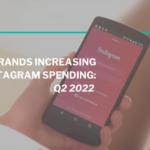
Effective Return to Office Prospecting Sales Strategies
After grappling with the Great Resignation and the Great Retirement, the workplace is now facing the Great Return. Citigroup, BNY Mellon, Google, and Twitter are just some of the big names that told employees to return to office. Though many will offer hybrid options with a couple of days in the office and a couple of days remote.

How does the shift in work environments affect sales strategies? Does your sales team need to adjust their prospecting based on the location of a prospective client?
Today, sales executives and their teams are expected to constantly measure prospecting effectiveness. Then to justify every cost based on ROI and the bottom line. From lead scoring and goal setting to competitor research and audience insights, implementing an effective prospecting strategy — and finding the right sales tools to empower your team — is critical for long-term success and business growth.
Of course, developing a successful prospecting strategy is easier said than done, especially if you are already working with limited resources and aren’t quite sure where to start. To help you get the return to office prospecting ball rolling and win more business, we’ve rounded up tips and tricks from the most successful sales professionals in the business.
Know the markets you serve and their return to office plans
Industries where critical supply chain, manufacturing, or agriculture are the primary business, require certain support employees to return to the office. This ensures production continuity and logistics demands are met. Banking is another sector pressured to get key personnel back to the office. JPMorgan began bringing staff who volunteered to return to the firm’s Manhattan office, starting with 20% of sales and trading staff, according to Bloomberg.
Alternatively, Airbnb employees can “live and work anywhere,” according to an April 28 email the home-sharing company’s Co-founder and CEO Brian Chesky sent to staff. Employees can move anywhere in the country without a change in compensation, will have the flexibility to travel and work around the world, and will meet up regularly — about four times per year — for team gatherings and social events.
In order to develop effective prospecting, you must understand every aspect of the market you serve, down to the nitty-gritty. Take the time to understand the needs and goals of your prospects, so that they view your offering as a valuable solution. Get the details, know your competition, and connect with your market in unique and personal ways.
Don’t slack off when it comes to your prospecting data
Almost half of employees are looking for a new job or plan to soon, as the Great Resignation is continues. 44% of employees are “job seekers,” according to Willis Towers Watson’s 2022 Global Benefits Attitudes Survey. Of them, 33% are active job hunters who looked for new work in the fourth quarter of 2021 and 11% in the first quarter of 2022.
Job openings and quits swelled to historic highs and layoffs fell to record lows. Wages grew at a fast clip as businesses competed for talent. Nearly 4.3 million people quit their jobs in January. Just shy of a monthly record set in November, according to the most recent federal data. Almost 48 million people quit in 2021, an annual record.
Your prospecting data erodes by up to 70 percent every year. And even more so now as they run from a return to office. Considering that many “inexpensive” lead lists are only updated once a year (if that), working off that data is a recipe for unproductive prospecting. Between lead quality and inaccurate data, buying cheap lead lists or relying on outdated information only creates more work.
Create a data-driven sales culture to maximize productivity and profitability
When it comes to sales and marketing effectiveness, details matter. Keep a constant pulse on marketing-generated leads vs. sales-generated leads. Track the click-through rates on sales and marketing email campaigns. Also, to effectively build a profitable, data-driven sales culture, invest in formal training programs. Have the right people and the right tools in place. Website traffic and Twitter followers are fine, but unless you can directly tie those back to revenue generated then you’re just spinning your wheels with fluffy data.




